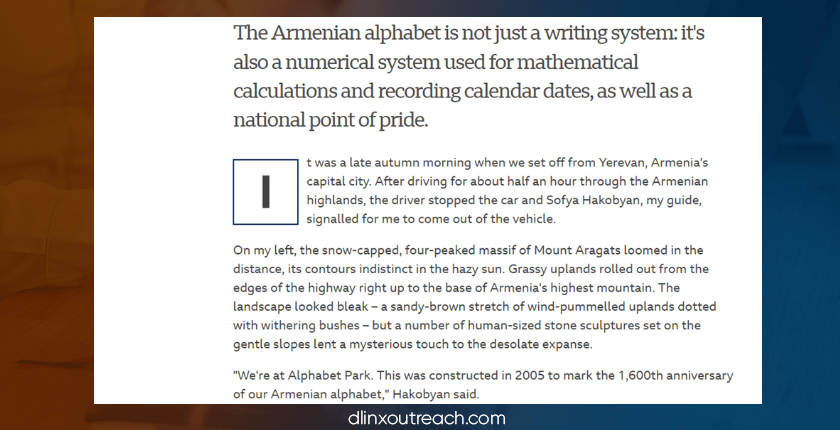A copywriter writes content that motivates and persuades a reader to take action. In contrast, a content writer focuses on conveying information for future decisions. So, copywriting is for the ads, billboards, slogans, and taglines. Content writing is for long articles, guest posts, manuals, detailed descriptions, E-books, etc.
Below is the typical example of copywriting from Nike.

Content is the basic ingredient and requirement of every industry, whether you are running a local business or operating at the global level. One needs to present products, services, and information in the most optimized way.
So, both copy and content writing is a form of write-up that serves different purposes in SEO, as the former is mostly a publicity stunt and the latter is for long-term brand awareness. If your text is relevant, extraordinary, catchy, informational, and SEO optimized then it will attract traffic and give you some business.
This is also the reason that content and copywriting is one of the most lucrative jobs in the market and also the most demanding skill among the freelancer’s fraternity.
The picture below shows a typical example of the content from BBC.

Following are some of the striking differences between copywriting and content writing.
1. Purpose
Copywriters encourage their audience to take some action. This content is mostly followed by the call-to-action button to make some purchases.
In contrast, content is for the information purpose. It provides detailed information about the topic at hand, in an effective way. It covers every aspect of that topic.
Read | Why Content Writing Is Important for SEO
2. Audience
Copywriting is for the targeted audiences that are to be converted into some action. It lures its audience to take some action. It is generally displayed at prominent places and shown to the targeted audience.
In contrast, content has a broader spectrum, when it comes to its readers and audience. It is mostly for the public or a broad range of people.
3. Word Count
Copywriting is for the short and precise write-up. Its length could consist of from 1 word to approximately 100 words.
In contrast, content may consist of 500 words to thousands of words, depending upon the nature of the content.
4. Structure
A copy consists of a phrase or small paragraphs, embedded with a single (mostly) image with some call-to-action buttons. It does not have headings or subheadings, backlinks or hyperlinks to other platforms.
In contrast, content has a proper structure like a table of contents, proper headings and subheadings. In addition, it should have backlinks for internal and external maneuvering for further information. It also has a sidebar to move to the most important part of the website and many more options.
5. Keywords
A copy is used to address the most important and relevant one or two keywords in its writeup and even in some cases, it might not be able to address any keyword at all. There is hardly any chance to address the long tail keywords in the copy.
In contrast, content can easily address the keywords and as a matter of fact, they must address keywords for easy indexing and crawling. They can also address the long tail keywords as well for better ranking in the search engine result pages.
Read | Does Google Rank ChatGPT Content
6. Information
A copy does not have information, rather it has some enticing slogans and taglines to motivate the readers and viewers to make a purchase decision.
In contrast, content has all the relevant information about the topic in hand. It is also recommended that content should explain every term in the text unless it is obvious or well-known.
7. Citation and References
A copy usually does not require the validation of stats and information, unless it has some extraordinary claim in its statement.
In contrast, content should provide reference to every stat that is mentioned in it. It should provide the citation to every claim in the text.
8. Display Media
A copy may please be displayed on social media as a tagline, ads (both visual and text), and slogans. It can also be displayed on billboards, side rails, and standees. Email marketing, print advertisements, text messages, landing pages, sales letters, brochures, and pamphlets are examples of the copy.
In contrast, content could consist of blogs, press releases, guest posts, articles, journal papers, newspaper columns, books, guides and manuals, social media blogs, video scripts, and case studies.
9. SEO optimization
If you want to target digital media and want to attract traffic through copy and content, then both should be SEO optimized.
A copy should have keywords, with a hyperlinked call to action button. It should be easily crawled and indexable. The margin for the SEO optimization is small in the copy.
Similarly, content should be optimized for the ranking process, and its headings and titles should be properly mentioned in the coding for easy indexing and crawling.
It should entice its reader for a better user experience. It must have backlinks both internal and external. Navigation should be properly placed. It must have the sitemap and all other SEO parameters.
Read | 14 Engaging Content Writing Topics For Practice
10. Effectiveness Period
A copy has a short life. Typically, it will work as long as long as they are displayed. Since copy is for a short period, it often gets replaced with the new version. For example, we have seen that ads mostly live for two to three months, before they get replaced with new ones. The copy might have to be replaced at a new launch, new offers and deals.
In contrast, content has a long life. If content is well written, optimized, updated, and informational then it will keep on working even for years unless the information that it provides becomes obsolete.
11. Call to Action – CTA
A copy requires an action. It is meant to motivate people to do some action like purchase, visit a website, register at a portal, etc.
Content by large provides the information and the only action that it could ask for is to visit a website at the end of the content for further information.
12. Images and Infographics
A copy does not have a lot of different images or infographics. Mostly, it has one large image, full of vibrant and exciting colors that suddenly attract people.
On the top of that infographic, the text is written for the action. These images in most cases are just for attraction, not necessarily to convey a meaning.
The picture below is from the 1958 Rolls-Royce campaign. One beautifully captured photo and a balanced meaningful text make this ad a masterpiece of copywriting.

In contrast, content can have more than one image in a writeup. These images are meaningful and convey the meaning. These images endorse the content and make the content more impactful and long-lasting.
Crossover between Copywriting and Content Writing

Although, we have explained the key differences between both terms in this article, sometimes, the difference between them becomes so bleak that it becomes very hard to differentiate between them.
In general, all the content that could call for some action at the end could serve the purpose of a copy. For example, some emails, long posts, guest posts social media pages, and vlogs often ask an action for purchase.
So, in these situations what should be done? The solution is very simple, if the purpose is to ask for an action at the end, then be very focused while writing, and stop long phrases, stories, and preambles. Remain relevant and precise and try to present a well-written, genuine, to-the-point, and informational write-up. This strategy will work when you are writing copy or content.
Read | Why Is Content-Based Link-Building Effective
Conclusions.
Content is the King, but the different types of content have different attributes and requirements. Copy and content writing overlap but are different fields, and both require different types of skills. Following is a summary of the differences between them.
- A copy is for the call to action, whereas content is for the information.
- A copy is for the targeted audience, whereas content is for a broader range of people.
- A copy could consist of a phrase or a very small write-up, whereas content can be as long as 500 words to thousands of words.
- A copy is effective for a short period, whereas content could work for years.
- A copy might have to be replaced/changed after a couple of months, whereas content can last even for years
- Both copy and content should be keyword-oriented, but content has more space and liberty to focus on the keyword.
- Both should be SEO-optimized, but making content SEO-optimized requires rigorous work.
- A copy does not have stats or a lot of images, whereas it is essential to add stats and images in content to understand your point of view.
- Typical examples of copy ads, billboards, and short outreach emails, and typical examples of content are articles, posts, manuals, and guidelines.
As said earlier, where you are creating a copy or content, both require SEO optimization. An optimization that could make them famous and perform well in the digital and real world. For that purpose, you need a team of experts that could design your marketing and SEO strategy.
Dlinx Outreach is an SEO agency that could help you design your strategy that makes you famous. Our team of experts devises customized strategies as per the needs of customers. We already have a penalty of experience in this field, as can be seen in our portfolio. Please feel free to contact us for further information.
Frequently Asked Questions.
What is copywriting?

Copywriting is a small writeup that focuses on a targeted audience and lures its reader and viewer to make a purchase.
What is content writing?
Content writing is a long writeup that has a broader range of audience and is more informational.
What are the three main differences between copy and content writing?
- Copy is for some action, whereas content is for information.
- Copy is short and precise, whereas content is long and informational.
- Copy is for a small period and often gets changed from time to time, whereas content is for a longer period and will only be changed if the information is obsolete.
What are the typical three examples of copy and content?
Ads, billboards, and short advertising emails are typical examples of copywriting. Blogs, guest posts, and E-books are typical examples of content.
Can Dlinx outreach help to write and optimize copy and content?
Dlinx Outreach is an experienced SEO agency that can write and optimize your content for better performance in the digital world.
Related Articles:







